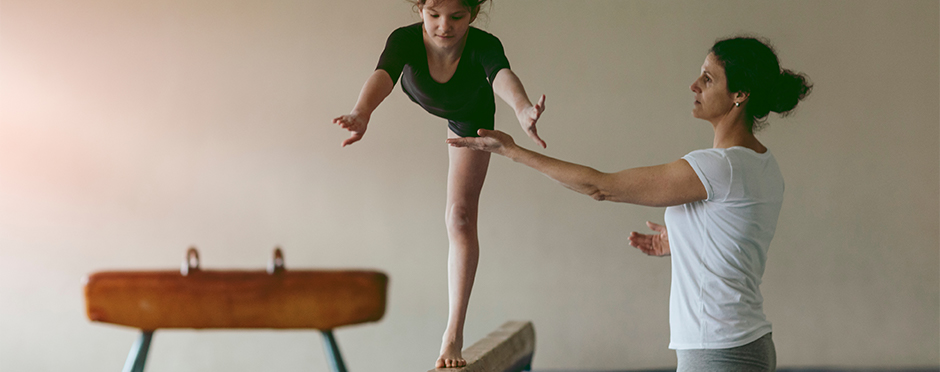
Sever’s Disease in Young Gymnasts
2 CommentsHeel pain is common in young children and it can be attributed to a condition called Sever’s disease.
Sever’s disease, which is also referred to as calcaneal apophysitis, is a result of inflammation of the growth plate of the heel. It is common in children who play sports that involve running or jumping, such as soccer, football, basketball and gymnastics. Gymnasts, however, are particularly affected due to the high level of jumping from a young age and because they are often barefoot when running and jumping.
Cause of Sever’s Disease
Growth plates in pediatric bones are vulnerable to stress. As children grow, their bones lengthen quickly which leads to a period of increased muscle tightness. Overly tight muscles, such as the gastrocnemius/soleus complex or the calf muscle as it is commonly known, pull on growth plates and this leads to increased inflammation from overuse.
Signs and symptoms of Sever’s disease include pain along the back or sides of the heel as well as pain that increases with standing on one foot and shifting weight back onto the heel. Typically, this pain comes without swelling.
The good news is that Sever’s disease is usually self-resolving when the growth spurt ends. That said, if gymnasts do not make adjustments to their training when experiencing symptoms, damage to the growth plate and other injuries can occur.
Treatment Options
There are a variety of treatment options for those experiencing symptoms from Sever’s disease, including:
- Reducing training intensity
- Using soft mats to reduce the stress on the heels during landings
- Taking over-the-counter pain medication (it is always best to check with a physician before taking medicine)
- Using heel support like a heel cup, X-brace, or Tuli’s Cheetah heel protector
- Stretching the calves more frequently
- Performing hip strengthening exercises to improve lower extremity alignment
- Regular use of ice
- Physical therapy
Recommendations to Coaches
Gymnastic coaches with team members suffering from Sever’s disease should minimize the amount of running, jumping and conditioning on hard surfaces. It is also beneficial to stretch the calves several times during practice, and recommend a heel cup or brace to gymnasts experiencing pain. Coaches can also make modifications to plyometric conditioning/drills and suggest the use of ice after practice. It is important to note that if ice is used in the middle of practice, the gymnast must make time to properly warm-up again. Lastly, coaches should encourage gymnasts to wear supportive shoes (gym shoes with arch support) when not in the gym.
Persistent Pain
If pain is not improving or worsening, it is important that the gymnast receives further evaluation, either by setting up a free injury screening at their nearest Athletico or by making an appointment with their doctor. Pushing through pain can lead to damage of the growth plate and subsequently more time out of the gym.
The Athletico blog is an educational resource written by Athletico employees. Athletico bloggers are licensed professionals who abide by the code of ethics outlined by their respective professional associations. The content published in blog posts represents the opinion of the individual author based on their expertise and experience. The content provided in this blog is for informational purposes only, does not constitute medical advice and should not be relied on for making personal health decisions.

2 Comments
lisa
Thank You Amy Bell , for sharing the information, can you share suggest me the videos of hip strengthening exercises ?
Amy Bell, PT, DPT
Hi Lisa, I’m happy to provide you with exercises and videos of hip strengthening exercises for gymnasts with Sever’s Disease. The exercise program we use allows me to send you an email with the descriptions and videos of the exercises. Please send me an email at amy.bell@athletico.com and I will send it to you.